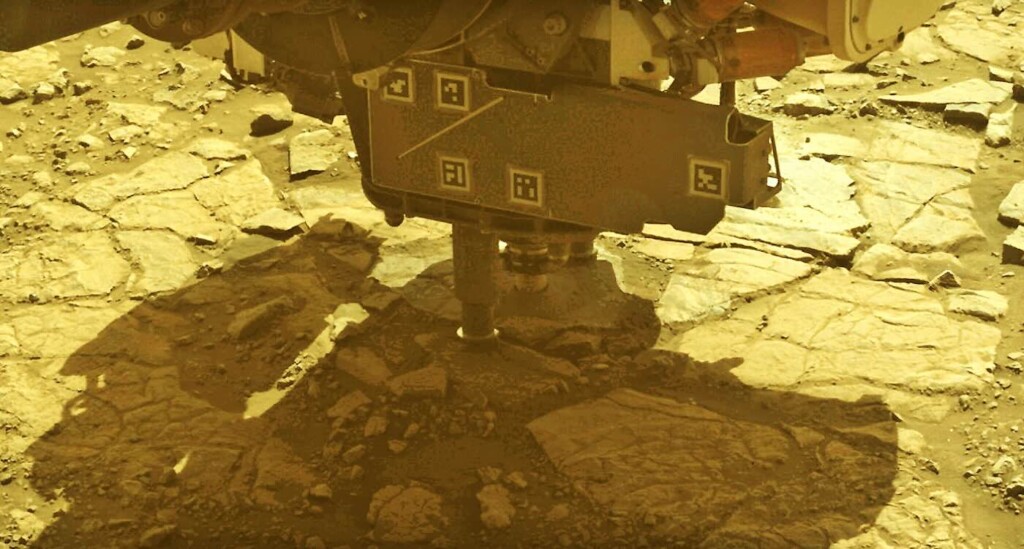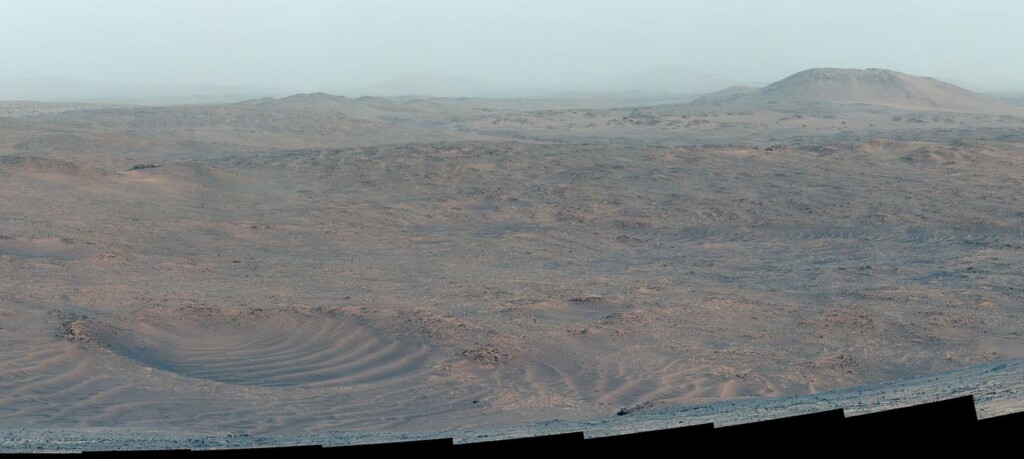Perseverance Rover Stumbles Upon Mars Rock Bonanza: ‘It has been all we had hoped for and more’

The state-of-the-art Perseverance Mars rover has been sampling and studying the Martian geology at the fastest rate since the mission began after NASA scientists found a special area containing “all they hoped for.”
Since its landing in the summer of 2021, Perseverance has been exploring the bottom of a large depression called Jezero Crater, at the bottom of which there was once a lake billions of years ago.
Having gathered samples of rocks and minerals along the crater floor, the delta of a river that fed the lake, and in various places on the crater slopes, the robotic geologist has been exploring the crater rim, where the diversity of the rocks has increased considerably.
It has conducted almost 100 sampling efforts since summiting, and there is still more to be done.
Looking back over a “whirlwind last four months” the team at NASA’s Jet Propulsion Laboratory (JPL) that drive and direct the rover are buzzing with excitement.
“During previous science campaigns in Jezero, it could take several months to find a rock that was significantly different from the last rock we sampled and scientifically unique enough for sampling,” Katie Morgan, who is the Perseverance’s project scientist at NASA’s JPL in Southern California, said in a statement. “But up here on the crater rim, there are new and intriguing rocks everywhere the rover turns. It has been all we had hoped for and more.”
Most of the work has been done on a roughly 445-foot-tall (135-meter-tall) slope the science team calls “Witch Hazel Hill.” Located on the western rim of the crater, it contains tons of fragmented once-molten rocks that were knocked out of their subterranean homes billions of years ago by one or more meteor impacts, including possibly the one that produced Jezero Crater.

Perseverance is also finding these formerly underground boulders juxtaposed with well-preserved layered rocks, and other masses that seem to have been sculpted by running water; a veritable rock bonanza that may have also included the oldest sample yet.
The sample code-named “Shallow Bay,” came from a piece that chipped off a solid rock that most likely formed at least 3.9 billion years ago during Mars’ earliest geologic period, the Noachian, and it may have been broken up and recrystallized during an ancient meteor impact.
ALSO CHECK OUT: Scientists Puzzling Over Bright White Rock on Mars – the First of its Kind, Never Seen Before
Perseverance has collected samples of five rocks, performed detailed analysis on seven others, and zapped an additional 83 with its laser for remote study. The laser is part of a spectrograph, which will analyze the colors of the rocks thus zapped, and each color can be seen in the spectrograph as a different element.
“The last four months have been a whirlwind for the science team, and we still feel that Witch Hazel Hill has more to tell us,” said Morgan. “We’ll use all the rover data gathered recently to decide if and where to collect the next sample from the crater rim. Crater rims — you gotta love ’em.”
MORE PERSEVERANCE UPDATES: NASA Summarizes What New Mars Rover has Found as it Finishes it’s Mission at Just Over 1,000 Days
The only downside is that, at the moment, there is no concrete plan for how to get Perseverance’s samples back from Mars. The sample return mission seen as feasible when the rover launched has recently seen its costs rise to $11 billion, prompting NASA to begin a complete overhaul of the plan and solicite new proposals from industry and academia to find a more affordable and faster way to return the samples to Earth.
SHARE This Worthwhile Update On The Perseverance Mars Mission With Your Friends…
>read more at © GoodNews
Views: 0